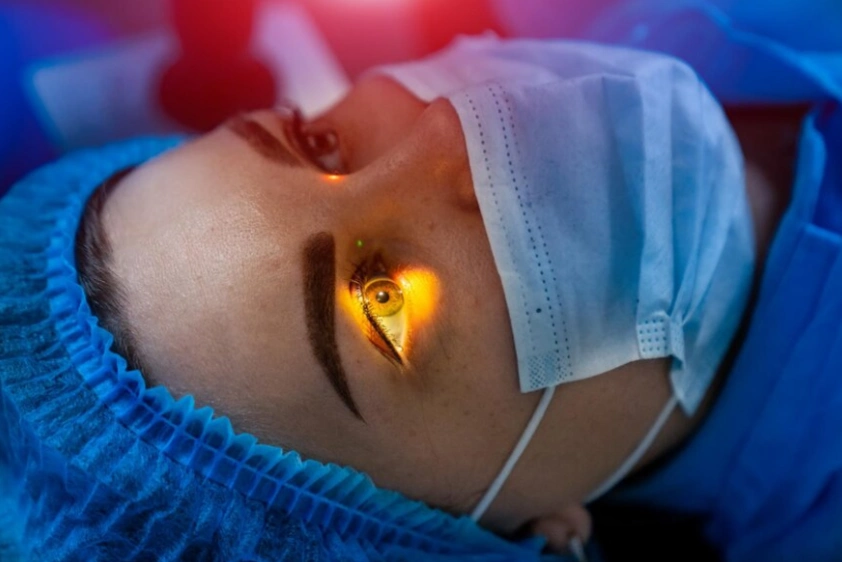HEALTH
Pregnancy Pillow Guide: Ultimate Comfort for Restful Sleep

When you’re pregnant, sleep can become a nightly struggle. In fact, 78% of pregnant women report sleep disturbances during their third trimester alone. But there’s a simple solution many moms swear by: the pregnancy pillow. Trust me, this isn’t just another item to add to your registry—it’s a game changer for your comfort and well-being.
Imagine finally getting a full night’s rest, despite the ever-growing baby bump. Sounds like a dream, right? That’s where a pregnancy pillow comes in. Whether you’re battling back pain, tossing and turning, or just can’t seem to get comfortable, this versatile pillow provides the relief you didn’t even realize you needed.
In this post, I’m going to break down exactly how a pregnancy pillow can help transform your sleep and even support your body during the day. Let’s dive in and get you the restful nights you deserve!
What Is a Pregnancy Pillow?
A pregnancy pillow is a specially designed pillow that supports your changing body as you progress through your pregnancy. Unlike traditional pillows, which are often too flat or too firm, pregnancy pillows come in various shapes and sizes, all crafted to accommodate the unique needs of an expectant mother. Whether you sleep on your side, back, or a combination of positions, there’s a pregnancy pillow that will fit your needs perfectly.
Why Do You Need a Pregnancy Pillow?
Sleep is essential during pregnancy—not just for your body’s recovery but also for your baby’s growth. Yet, as your baby bump grows, it becomes harder to find a comfortable sleeping position. Lying on your back can restrict blood flow, while sleeping on your side often leads to aches and pains. A pregnancy pillow offers targeted support that helps alleviate pressure from your hips, back, belly, and legs. The result? Better sleep and reduced discomfort throughout the day.
But the benefits don’t stop at bedtime. Many women find that pregnancy pillows provide much-needed relief during the day as well. Whether you’re reading, watching TV, or sitting for long periods, a pregnancy pillow can offer additional back support, easing the strain on your spine and helping you maintain proper posture.
The Different Types of Pregnancy Pillows
Pregnancy pillows come in various shapes, sizes, and designs to meet the diverse needs of expectant mothers. Let’s explore the most popular types and what each one offers.
Full-Length Pregnancy Pillow
Full-length pillows run the length of your body and are perfect for side sleepers. They allow you to hug the pillow while resting your belly and legs on it, providing balanced support. These are great for those who want to avoid multiple pillows on the bed and prefer an all-in-one solution.
C-Shaped Pillow
The C-shaped pillow wraps around your body, offering support to your head, neck, belly, and legs. It is particularly useful for women who experience back pain or discomfort when switching sleep positions. The C-shape helps maintain the natural alignment of your spine, promoting healthier sleep patterns.
U-Shaped Pillow
A U-shaped pregnancy pillow is one of the most popular options because it offers full-body support. You can rest your back on one side, your belly on the other, and still have something to hug in the middle. This pillow is perfect for women who toss and turn during the night, as it eliminates the need to adjust the pillow constantly.
Wedge Pillow
If you’re looking for something small and versatile, a wedge pillow might be the right choice. It’s a compact option that can be placed under your belly, behind your back, or between your knees to provide targeted support. Wedge pillows are particularly helpful for women who need a little extra lift but don’t want to deal with a full-size pillow.
How to Choose the Best Pregnancy Pillow for You
With so many options on the market, how do you choose the right pregnancy pillow for your needs? Here are a few factors to consider when making your decision.
Size of the Pillow
Pregnancy pillows come in a range of sizes, from small wedges to full-body designs. Consider the space available in your bed, as well as your sleep preferences. If you have a partner, a larger pillow like the U-shaped design may take up a significant amount of room.
Material and Fillings
Pillow fillings vary, from memory foam to polyester fiberfill. Memory foam provides excellent support but can retain heat, which may be uncomfortable for some women. Fiberfill pillows are lighter and more breathable, but they may lose shape over time. Think about what material feels most comfortable against your skin and offers the right amount of firmness for your body.
Support Needs
Each pregnancy is different, so it’s important to focus on your body’s specific needs. If you’re dealing with lower back pain, a C-shaped or U-shaped pillow will provide more comprehensive support. If you just need a little extra help under your belly, a wedge pillow could do the trick.
The Benefits of Using a Pregnancy Pillow
Now that we’ve covered the types of pregnancy pillows and how to choose the right one, let’s dive into the benefits that make these pillows a must-have during pregnancy.
Improved Sleep Quality
The primary reason to invest in a pregnancy pillow is to improve your sleep quality. With your body undergoing significant changes, finding a comfortable position becomes challenging. A pregnancy pillow helps alleviate pressure on key areas, reducing discomfort and allowing you to sleep soundly.
Relieves Back and Hip Pain
Pregnancy can cause strain on your back and hips, especially as your belly grows. A pregnancy pillow provides targeted support to these areas, helping reduce pain and discomfort. By maintaining proper alignment, it helps prevent long-term issues like sciatica or joint pain.
Reduces Swelling in Legs and Feet
Swelling in the legs and feet, also known as edema, is common during pregnancy. A pregnancy pillow can elevate your legs, improving blood circulation and reducing swelling. This not only makes you more comfortable but also promotes better overall health.
Helps with Postpartum Recovery
The benefits of a pillow don’t end once your baby is born. Many women find these pillows useful during postpartum recovery. Whether you need extra support while nursing or want to ease the strain on your back, a pregnancy pillow continues to offer comfort even after pregnancy.
How to Use a Pregnancy Pillow Correctly
Using a pregnancy pillow is simple, but there are a few tips that can help you get the most out of it.
- For Side Sleeping: Place the pillow between your knees, supporting your belly and back. This helps align your spine and reduces pressure on your hips.
- For Back Pain Relief: If you experience back pain, position the pillow behind you to support your lower back while you sleep on your side.
- For Belly Support: Use a wedge pillow under your belly to provide gentle support and reduce the strain caused by the weight of your baby bump.
Also Read: Benefits of Peñiculs: The Future of Digital Wellness
Frequently Asked Questions
What is the best pregnancy pillow for back pain?
A U-shaped or C-shaped pregnancy pillow is ideal for back pain. These designs offer full-body support and help maintain proper spinal alignment throughout the night.
Can I use a pregnancy pillow if I’m not pregnant?
Yes! They are not just for expectant mothers. Many people use them to relieve back pain, improve sleep quality, or simply get more comfortable in bed.
How soon should I start using a pregnancy pillow?
There’s no set time to start using a pregnancy pillow, but many women begin around the second trimester when their belly starts to grow and sleep becomes more uncomfortable.
Are pregnancy pillows washable?
Most pregnancy pillows come with removable covers that are machine washable. Always check the manufacturer’s care instructions to ensure longevity.
Can I travel with a pregnancy pillow?
Smaller pillows like wedge pillows are ideal for travel. They’re compact enough to fit in your luggage and can provide essential support on the go.
Will a pregnancy pillow help with swelling?
Yes, elevating your legs with a pregnancy pillow can help reduce swelling in your feet and ankles by improving circulation.
Conclusion
Pregnancy pillows are more than just a comfort item—they’re a necessity for expectant mothers seeking relief from the physical challenges that come with pregnancy. Whether you’re struggling with back pain, hip discomfort, or restless nights, the right pregnancy pillow can help restore your sleep and improve your overall well-being. Take the time to find the one that works best for your body, and enjoy the difference it makes, both during pregnancy and beyond.
HEALTH
Foenegriek Seeds Unlock Natural Healing and Strength

Foenegriek—known globally as fenugreek and traditionally as methi—is one of the oldest cultivated medicinal and culinary herbs in human history. For more than 6,000 years, this remarkable seed has traveled across cultures, continents, and civilizations, shaping cuisine, healing traditions, and even early trade markets. Today, foenegriek continues to rise in global popularity, not only as a spice but as a scientifically validated super-ingredient with impressive benefits for health, nutrition, cosmetics, and wellness.
In this extensive article, we explore how foenegriek grew from an ancient herbal remedy into a modern innovation ingredient, why its demand is skyrocketing worldwide, and what makes it stand out among natural medicinal seeds. From its rich history and nutritional profile to its therapeutic strengths, culinary diversity, and commercial applications, this 1,500-word deep dive uncovers everything you need to know about the powerful seed called foenegriek.
1. The Origins of Foenegriek: A Seed With a Timeless Legacy
Foenegriek (Trigonella foenum-graecum) is believed to have originated in the Mediterranean basin and parts of Southwest Asia. Archeological findings show that ancient Egyptians used foenegriek seeds in embalming mixtures and medicinal potions. The Greeks and Romans cultivated it as forage for animals—hence the name foenum graecum, meaning “Greek hay”—but soon recognized its value as a medicinal herb.
A Global Journey Across Civilizations
-
Egyptians prized it for easing childbirth and digestive issues.
-
Greeks recommended it for respiratory problems.
-
Romans used foenegriek for muscle recovery and appetite stimulation.
-
Indians integrated it deeply into Ayurveda, food, and household remedies.
-
Chinese medicine used it to treat weakness, swelling, and kidney imbalance.
-
Middle Eastern and North African cultures adopted it into spice blends, teas, and postpartum care.
Throughout history, foenegriek was both a culinary ingredient and a medicinal necessity, often serving as a bridge between food and healing. Its warm, slightly bitter, nut-like taste made it a popular spice, while its dense nutrient profile made it a universal remedy for strength, vitality, and wellness.
2. Nutritional Powerhouse: What Makes Foenegriek So Special?
Foenegriek’s benefits stem from its impressive nutritional and chemical composition. Each tiny seed contains a powerful concentration of bioactive compounds, making it a true superfood.
Key Nutrients in Foenegriek
-
Protein: Among the highest protein content of any seed.
-
Fiber: Rich in soluble fiber, especially galactomannans.
-
Minerals: Iron, magnesium, manganese, phosphorus, copper, and potassium.
-
Vitamins: B1, B2, B3, and limited vitamin C.
-
Healthy oils: Including linoleic and linolenic acids.
Bioactive Compounds
-
Diosgenin: A plant-based steroid precursor used in pharmaceuticals.
-
Trigonelline: Supports blood sugar management and brain health.
-
Saponins: Boost immunity and cholesterol metabolism.
-
Alkaloids and flavonoids: Provide antioxidant and anti-inflammatory effects.
This nutrient-rich profile is one reason foenegriek has gained global recognition among nutritionists, herbalists, and health-conscious consumers.
3. Major Health Benefits of Foenegriek
Foenegriek is no longer only a traditional remedy—modern clinical research consistently supports many of its benefits. This has helped foenegriek become one of the fastest-growing herbal supplements worldwide.
1. Blood Sugar Regulation
Foenegriek is perhaps most famous for its ability to stabilize blood glucose. Studies show that:
-
Soluble fiber slows carbohydrate digestion.
-
Trigonelline improves insulin sensitivity.
-
Saponins enhance glucose uptake in cells.
This makes foenegriek a supportive supplement for people managing diabetes, prediabetes, or metabolic syndrome.
2. Improves Digestion and Gut Health
Foenegriek has long been used to:
-
reduce acidity
-
ease indigestion
-
soothe constipation
-
support healthy gut flora
Its mild mucilaginous texture forms a protective layer in the stomach, helping calm irritation.
3. Enhances Women’s Health
In traditional households, foenegriek is a women’s wellness staple. Benefits include:
-
easing menstrual discomfort
-
supporting milk production in breastfeeding mothers
-
promoting hormonal balance
-
strengthening postpartum recovery
Many lactation teas and supplements around the world rely heavily on foenegriek seeds.
4. Boosts Testosterone and Men’s Wellness
Recent studies show that foenegriek extracts may:
-
increase testosterone levels naturally
-
enhance male vitality
-
improve muscle growth and sports performance
-
reduce fatigue
This has made foenegriek a popular ingredient in male fitness supplements.
5. Reduces Cholesterol Levels
Foenegriek’s fiber binds with cholesterol in the digestive tract, helping reduce LDL levels while supporting heart health.
6. Anti-inflammatory and Antioxidant Effects
Its flavonoids and alkaloids help reduce cellular inflammation, supporting long-term wellness and disease prevention.
7. Supports Hair and Skin Health
Foenegriek is widely used in beauty care for:
-
strengthening hair roots
-
reducing dandruff
-
promoting hair growth
-
improving skin elasticity
-
treating acne and inflammation
Foenegriek masks, oils, and serums have become increasingly popular in natural cosmetic markets.
4. Culinary Uses: A Flavorful, Versatile Ingredient
While many know foenegriek for its health benefits, its culinary importance is equally remarkable. The seeds, leaves, and powder all serve different purposes in global cuisine.
Foenegriek Seeds
-
Used in spice blends like curry powder, berbere, and garam masala.
-
Added to lentil dishes, pickles, and stews.
-
Roasted to bring out a nutty aroma.
Foenegriek Leaves (Fresh or Dried)
Known as methi, the leaves add a strong, earthy taste to:
-
breads (methi paratha)
-
curries
-
rice dishes
-
soups
-
vegetable mixes
Foenegriek Powder
Used as a thickener, flavor booster, and aromatic seasoning.
Foenegriek Tea
A popular herbal infusion for digestion, immunity, and relaxation.
Foenegriek Sprouts
Rich in enzymes, fiber, and vitamins, sprouts are added to salads and wellness bowls.
The combination of flavor and health benefits makes foenegriek one of the most multifunctional ingredients in global gastronomy.
5. Foenegriek in Modern Wellness and Industry
Today, foenegriek has expanded beyond the kitchen and traditional medicine. It is now a key ingredient in multiple industries:
1. Pharmaceutical Industry
Diosgenin extracted from foenegriek serves as a base compound in:
-
steroid synthesis
-
hormone treatments
-
anti-inflammatory medications
2. Nutraceuticals and Supplements
Foenegriek capsules, powders, and extracts are used for:
-
energy boosting
-
lactation support
-
hormonal balance
-
sports performance
-
weight management
3. Beauty and Cosmetics
Foenegriek is featured in:
-
hair oils
-
shampoos
-
serums
-
face masks
-
anti-aging creams
Its natural thickening properties also make it useful in organic skincare formulations.
4. Functional Foods
Health brands increasingly include foenegriek in:
-
energy bars
-
herbal teas
-
protein mixes
-
fortified foods
5. Agriculture and Animal Feed
Just like ancient times, foenegriek is still valued as a nutrient-rich fodder crop.
Through innovation and research, foenegriek has secured a strong position in wellness-focused industries.
6. Growing Foenegriek: A Sustainable, Climate-Resilient Crop
Foenegriek is incredibly resilient and easy to grow, making it a valuable crop in both traditional farming and modern agriculture.
Advantages for Farmers
-
Low water requirements
-
High drought resistance
-
Fast harvest cycle (3–4 months)
-
Soil-enriching nitrogen-fixing properties
-
Suitable for arid and semi-arid regions
Because of these qualities, foenegriek is being promoted as a sustainable crop option in regions facing climate change, soil depletion, and water scarcity.
7. Potential Side Effects and Precautions
While foenegriek is generally safe, certain considerations are important:
-
Large doses can cause digestive discomfort or bloating.
-
Pregnant women should avoid excessive consumption.
-
People on diabetes medication should monitor blood glucose closely.
-
Allergic reactions are rare but possible.
Moderation and guidance from a health professional are recommended, especially when using supplements.
8. The Future of Foenegriek: A Seed With Growing Global Importance
As global interest in natural remedies, herbal nutrition, and plant-based health solutions continues to rise, foenegriek is perfectly positioned to become a leading botanical ingredient.
Trends driving its future growth
-
Increased demand for natural supplements
-
Rising popularity of Ayurvedic and herbal wellness
-
Growth of clean beauty and organic skincare
-
Expansion of functional foods
-
Renewed focus on sustainable agriculture
Foenegriek is far more than a traditional spice—it is a bridge between ancient knowledge and modern wellness science
HEALTH
Health Threetrees Com VN: A Bridge Between Wellness and Everyday Life
HEALTH
Best LASIK Eye Surgery in Dubai: Clear Vision Starts Here

The Growing Popularity of LASIK in Dubai
Over the years, LASIK eye surgery has transformed the way people perceive vision correction. Once a procedure reserved for those with severe vision impairments, LASIK has now become a popular choice for individuals seeking to enhance their quality of life by achieving clearer vision. In Dubai, known for its advanced medical infrastructure, LASIK has gained significant traction among both residents and medical tourists. With cutting-edge technology and highly skilled surgeons, Laser eye surgery Dubai professionals offer a reliable and safe solution to eliminate the need for glasses or contact lenses.
As the demand for LASIK increases, clinics in Dubai are continuously upgrading their equipment and techniques, ensuring that patients benefit from the latest advancements in the field. The combination of world-class medical expertise and state-of-the-art facilities makes Dubai an ideal destination for anyone considering LASIK. Whether for cosmetic reasons or due to the inconveniences of traditional vision correction methods, people from around the world are turning to Dubai for clear vision.
Understanding LASIK Eye Surgery
LASIK (Laser-Assisted in Situ Keratomileusis) is a non-invasive eye surgery that reshapes the cornea to correct refractive errors, such as nearsightedness (myopia), farsightedness (hyperopia), and astigmatism. The procedure uses a specialized laser to remove tiny amounts of corneal tissue, which helps the eye focus light correctly on the retina, resulting in clearer vision. Unlike traditional corrective lenses, LASIK provides a more permanent solution, often eliminating or reducing the need for glasses or contact lenses.
The LASIK procedure involves creating a thin flap in the cornea, which is then lifted to allow the laser to reshape the underlying tissue. Afterward, the flap is repositioned, and the healing process begins. One of the primary advantages of LASIK is its quick recovery time, with many patients experiencing improved vision within hours after the procedure. However, successful outcomes depend on several factors, including the patient’s eye health, the surgeon’s expertise, and the technology used during the procedure.
Why Choose LASIK in Dubai?
Dubai is renowned for its exceptional healthcare services, with LASIK surgery being no exception. Many people from different parts of the world travel to Dubai for their LASIK procedure due to the availability of cutting-edge technology and skilled ophthalmologists. When choosing Laser eye surgery Dubai has become a popular destination, patients benefit from advanced diagnostic tools, sophisticated lasers, and world-class medical care.
Another reason for the rising popularity of Laser eye surgery dubai is the reputation of its medical professionals. The city boasts an impressive number of internationally trained and certified ophthalmologists who have expertise in performing LASIK procedures. With their knowledge, experience, and commitment to patient care, these specialists ensure that every LASIK procedure is as safe and effective as possible. Additionally, Dubai’s healthcare system is highly regulated, ensuring that medical standards are consistently maintained, which provides peace of mind to patients.
The LASIK Consultation: Your First Step to Clear Vision
Before undergoing LASIK surgery, it’s essential to have a thorough consultation with a qualified ophthalmologist. During this initial appointment, the surgeon will evaluate your eye health and determine if you are a good candidate for LASIK. This assessment typically includes a detailed eye examination to measure the shape and thickness of your cornea, your pupil size, and your refractive errors. It may also involve tests to check the health of your retina and other components of the eye.
The consultation is also an opportunity for patients to ask questions and discuss any concerns. The surgeon will explain the LASIK procedure in detail, including the risks, benefits, and expected outcomes. They will also inform you about the recovery process and post-operative care. By the end of the consultation, you should have a clear understanding of what to expect, which can help alleviate any anxiety about the surgery. Your surgeon will tailor the procedure to suit your specific needs, ensuring the best possible results for your vision.
LASIK Surgery Procedure: What to Expect
The LASIK procedure is quick and relatively painless, typically lasting around 10 to 15 minutes per eye. On the day of the surgery, you will be asked to lie down in a comfortable chair, and a local anesthetic in the form of eye drops will be applied to numb the eyes. A device is used to keep your eyelids open, and a small suction ring may be placed to stabilize the eye during the surgery.
The surgeon will then create a thin flap in the cornea using a microkeratome or a femtosecond laser. Once the flap is lifted, the laser is directed onto the cornea to reshape it according to the specific refractive error. The surgeon will ensure that the laser is precisely focused, and the procedure is closely monitored to guarantee optimal outcomes. After the cornea is reshaped, the flap is repositioned and begins to heal naturally.
In most cases, patients report little to no pain during the procedure, and any discomfort afterward can be managed with prescribed eye drops or over-the-counter medications. The procedure’s minimally invasive nature contributes to a fast recovery time, and most people can return to their normal activities within a day or two.
LASIK Aftercare: Ensuring a Smooth Recovery
One of the key advantages of Laser eye surgery Dubai specialists perform is the fast recovery time. Most patients experience only mild discomfort after the procedure, such as dryness or a gritty sensation in the eyes. However, it’s essential to follow the aftercare instructions carefully to ensure proper healing and achieve the best possible results.
Immediately after the surgery, patients are typically advised to rest for a few hours while their eyes heal. You may experience some blurry vision, sensitivity to light, or slight tearing during the first few days, but these symptoms should subside quickly. It’s important to avoid rubbing the eyes, as this can interfere with the healing process. Additionally, you should refrain from swimming, using hot tubs, or exposing your eyes to direct sunlight without protective sunglasses during the first few weeks.
Your surgeon will schedule follow-up appointments to monitor your recovery and ensure that your vision is improving as expected. During these visits, the surgeon will check for any complications, such as infection or dryness, and provide treatments if necessary. Most patients achieve stable vision within a few weeks, but full healing can take several months.
Risks and Considerations of LASIK Surgery
Like any surgical procedure, LASIK surgery carries some risks, although they are rare. Possible complications include dry eyes, glare or halos around lights, infection, or an incomplete flap during the surgery. In some cases, patients may not achieve the desired level of vision correction and may require a second procedure or the use of glasses or contact lenses.
It’s important to have realistic expectations about LASIK results. While most patients achieve 20/25 vision or better, some may experience minor vision fluctuations during the healing process. A thorough consultation with a trusted ophthalmologist is crucial to ensure you fully understand the potential risks and benefits of LASIK. With the guidance of a skilled surgeon, the likelihood of complications is minimal, and the benefits of clear vision often far outweigh the risks.
The Cost of LASIK Surgery in Dubai
One of the most frequently asked questions about LASIK surgery is the cost. The price of Laser eye surgery Dubai specialists offer varies depending on several factors, including the type of technology used, the surgeon’s experience, and the complexity of the procedure. On average, LASIK surgery in Dubai can range from AED 5,000 to AED 10,000 per eye.
While the cost may seem high, it’s important to consider the long-term savings. LASIK eliminates the need for glasses and contact lenses, which can be expensive over time. Many clinics in Dubai also offer financing options to make LASIK surgery more accessible to a wider range of patients. It’s essential to thoroughly research the costs and options before making a decision, ensuring that you choose a clinic that offers the best value for your investment in clear vision.
Conclusion
Laser eye surgery Dubai has become a top choice for those seeking permanent vision correction. With advanced technology, skilled surgeons, and excellent aftercare, LASIK provides a safe and effective solution to improve vision and enhance quality of life. Whether you’re tired of dealing with glasses or contact lenses, or you simply want to enjoy the freedom of clear, natural vision, LASIK offers a transformative experience.
The key to successful LASIK surgery lies in choosing a reputable clinic with experienced ophthalmologists who use state-of-the-art technology. With proper care, most patients achieve exceptional results and enjoy clear vision for years to come. If you’re considering LASIK, Dubai offers the ideal environment to make your vision correction journey a reality. Start your path to clear vision today and experience the life-changing benefits of LASIK surgery in Dubai.
-

 NEWS1 year ago
NEWS1 year agoSearchinventure: Redefining the Digital Experience
-

 HEALTH1 year ago
HEALTH1 year agoUnveiling the //vital-mag.net blog: Your Gateway to Health and Wellness
-

 NEWS1 year ago
NEWS1 year agoThe Alicia Case in Atlanta: A Deep Dive
-

 FASHION1 year ago
FASHION1 year agoHow to Style Floral Long-Sleeve Homecoming Dresses for a Glamorous Look
-

 BUSINESS1 year ago
BUSINESS1 year agoPedro Vaz Paulo: A Visionary Business Consultant Driving Success
-

 NEWS1 year ago
NEWS1 year ago2023-1954: A Journey Through the Decades
-

 Pets1 year ago
Pets1 year agoUltimate Strength: Heavy-Duty Tactical Dog Collars for Large Breeds
-

 TECHNOLOGY1 year ago
TECHNOLOGY1 year agoThe Evolution of Technology: From 1954 to 2023

